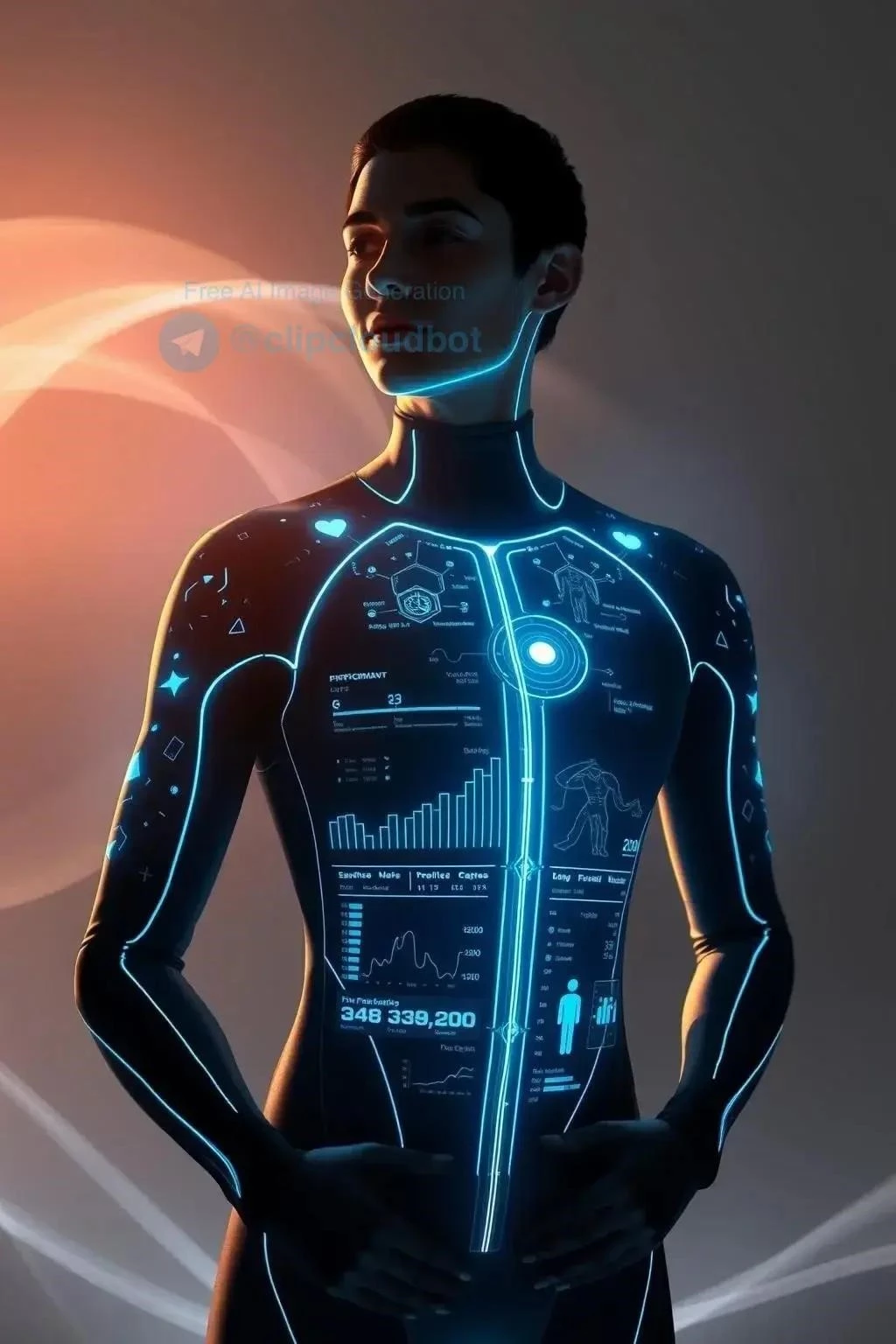The Current Landscape of Wearable Technology
Wearable technology has rapidly evolved from basic step counters to sophisticated devices capable of tracking a multitude of physiological parameters. Today’s market offers a diverse range of wearables, from smartwatches and fitness trackers to smart clothing and hearables. These devices collect data like heart rate, sleep patterns, activity levels, and even blood oxygen saturation. This data explosion is driving innovation, creating a connected ecosystem where individuals can monitor their well-being in real-time.
Shifting Focus: From Fitness Tracking to Health Prediction
The initial wave of wearable technology primarily focused on fitness tracking, providing users with data on steps taken, calories burned, and distance covered. While these metrics remain valuable for monitoring physical activity, the industry is rapidly shifting its focus towards a more proactive and predictive approach to health management. This evolution is fueled by advancements in sensor technology, data analytics, and artificial intelligence, enabling wearables to move beyond simply recording data to analyzing it for meaningful insights and predictions.
Instead of just telling you how many steps you’ve taken, tomorrow’s wearables will be able to predict potential health issues before they manifest. By continuously monitoring physiological data and identifying subtle patterns and deviations from the norm, these devices can act as early warning systems, alerting users and healthcare professionals to potential risks. Imagine a smartwatch that detects a slight irregularity in your heart rhythm, suggesting a visit to the cardiologist before any noticeable symptoms appear. Or a wearable that analyzes your sleep patterns and stress levels to predict the onset of a migraine, allowing you to take preventative measures.
This shift towards predictive health management has significant implications for both individuals and the healthcare system as a whole. For individuals, it empowers them to take control of their health and make proactive choices to mitigate risks. Early detection of potential health issues can lead to earlier intervention, potentially preventing serious illnesses and improving long-term outcomes. For the healthcare system, predictive wearables offer the potential to reduce costs by shifting the focus from reactive treatment to preventative care. By identifying individuals at risk before they require expensive medical interventions, wearables can contribute to a more sustainable and efficient healthcare model.
The convergence of powerful sensors, sophisticated algorithms, and readily accessible data is transforming wearables into powerful tools for personalized health prediction. This shift represents a fundamental change in how we approach healthcare, moving from a reactive model to a proactive one where individuals are empowered to take control of their well-being and prevent illness before it strikes. This transformative potential is driving significant investment and innovation in the field, promising a future where wearables play a central role in maintaining and improving our health.
Early Detection and Prevention of Illness through Biometric Data
The ability of wearables to continuously monitor a wide range of biometric data is revolutionizing the potential for early disease detection and prevention. By collecting and analyzing physiological signals like heart rate variability, skin temperature, sleep patterns, and even blood glucose levels, these devices can identify subtle changes that may indicate the onset of an illness, often before noticeable symptoms appear. This early detection capability is particularly promising for chronic conditions like diabetes, heart disease, and even some types of cancer.
For example, continuous glucose monitoring (CGM) wearables are transforming diabetes management by providing real-time insights into blood sugar fluctuations. This allows individuals to make more informed decisions about diet, exercise, and medication, leading to better glycemic control and reduced risk of complications. Similarly, wearables that monitor heart rate variability can detect early signs of cardiac arrhythmias, prompting timely medical intervention. Emerging research is even exploring the potential of wearables to detect early signs of infectious diseases like influenza by analyzing changes in body temperature and other physiological markers.
Beyond detection, biometric data from wearables can also play a crucial role in disease prevention. By providing personalized insights into individual health risks and behaviors, these devices empower users to make proactive lifestyle changes. For instance, a wearable that detects poor sleep quality can encourage users to prioritize sleep hygiene, while a device that monitors stress levels can prompt them to adopt stress-reducing practices like mindfulness or meditation. This personalized feedback loop can lead to sustained behavioral changes that contribute to long-term health and well-being.
The wealth of biometric data collected by wearables also offers valuable insights for medical research and development. By analyzing large datasets of physiological information, researchers can identify new biomarkers for disease and develop more effective diagnostic and treatment strategies. This data-driven approach to healthcare has the potential to accelerate medical innovation and improve patient outcomes across a wide range of conditions. As sensor technology continues to advance and data analysis techniques become more sophisticated, the role of biometric data from wearables in early disease detection and prevention will only continue to grow.
Optimizing Athletic Performance with Advanced Wearables
Wearable technology has become an indispensable tool for athletes of all levels, providing valuable data and insights to optimize training, improve performance, and reduce the risk of injury. Advanced wearables go beyond basic activity tracking, offering sophisticated metrics like heart rate variability, VO2 max, running power, and even biomechanical analysis. This data empowers athletes and coaches to personalize training plans, monitor recovery, and fine-tune performance strategies.
For endurance athletes, wearables can track metrics like pace, distance, and elevation gain, providing real-time feedback during training sessions. Heart rate variability data can be used to monitor fatigue and optimize recovery, while VO2 max measurements can assess cardiovascular fitness and track progress over time. These insights enable athletes to tailor their training intensity and duration to maximize performance gains while minimizing the risk of overtraining.
Wearables are also playing an increasingly important role in injury prevention. By analyzing biomechanical data like stride length, cadence, and ground contact time, these devices can identify movement patterns that may increase the risk of injury. This information can be used to correct faulty mechanics, improve running form, and reduce the likelihood of developing overuse injuries. Some wearables even incorporate sensors that detect muscle fatigue and provide alerts when it’s time to rest, further reducing the risk of injury.
Beyond individual athletes, wearables are also transforming team training and performance analysis. Coaches can use data from wearable sensors to monitor the workload and recovery of their athletes, identify areas for improvement, and develop targeted training programs. Real-time data during practices and games can provide valuable insights into player performance and inform strategic decisions. As wearable technology continues to evolve, its role in optimizing athletic performance and maximizing human potential will only continue to expand.
The Future of Wearables: Personalized Medicine and Proactive Healthcare
The future of wearable technology holds immense promise for transforming healthcare into a more personalized and proactive system. As sensor technology continues to advance and data analysis techniques become more sophisticated, wearables will play an increasingly central role in managing our health and well-being. Imagine a future where continuous monitoring of biometric data allows for early detection of diseases, personalized treatment plans, and proactive interventions to prevent illness before it strikes.
Personalized medicine, tailored to individual genetic makeup and lifestyle factors, will be significantly enhanced by the data generated by wearables. By continuously monitoring physiological responses to different treatments and interventions, these devices can provide valuable insights into what works best for each individual. This data-driven approach will enable healthcare providers to optimize treatment strategies and improve patient outcomes.
Proactive healthcare, focused on preventing illness rather than simply treating it, will also be a key beneficiary of advancements in wearable technology. By identifying risk factors and early warning signs of disease, wearables can empower individuals to make proactive lifestyle changes and seek timely medical intervention. This shift towards preventative care has the potential to reduce healthcare costs and improve overall population health.
The integration of wearables with other emerging technologies like artificial intelligence and machine learning will further enhance their capabilities. AI-powered algorithms can analyze vast amounts of data from wearables to identify complex patterns and predict health outcomes with increasing accuracy. This will enable more precise and personalized interventions, leading to more effective disease management and prevention.
The future of wearables is not just about tracking steps and calories; it’s about empowering individuals to take control of their health and creating a future where healthcare is more personalized, proactive, and predictive. This transformative potential is driving continuous innovation and investment in the field, promising a future where wearables play a vital role in improving our lives and extending our healthspan.
Challenges and Ethical Considerations in Predictive Wearable Technology
While the potential of predictive wearable technology is immense, it also raises important challenges and ethical considerations that must be addressed to ensure responsible development and implementation. Data privacy and security are paramount concerns, as the sensitive health information collected by these devices must be protected from unauthorized access and misuse. Robust security measures, including encryption and secure data storage, are essential to maintain user trust and prevent potential harm.
The accuracy and reliability of predictions generated by wearables are also critical considerations. False positives or inaccurate predictions can lead to unnecessary anxiety, unnecessary medical interventions, and even potential harm. Rigorous validation studies and ongoing monitoring of algorithm performance are essential to ensure the accuracy and reliability of predictive models.
The potential for health disparities is another important ethical concern. Access to wearable technology and the ability to interpret and act on the data generated by these devices may not be equally distributed across different populations. Efforts to ensure equitable access and provide appropriate support and education are crucial to avoid exacerbating existing health disparities.
The psychological impact of predictive health information must also be considered. Receiving predictions about potential future health risks can be emotionally challenging and may lead to anxiety, stress, and even fatalism. Providing appropriate support and counseling services is essential to help individuals cope with this information and make informed decisions about their health.
Finally, the ethical implications of using wearable data for purposes beyond individual healthcare, such as insurance underwriting or employment screening, must be carefully considered. Clear guidelines and regulations are needed to prevent discrimination and protect individual privacy rights. Addressing these challenges and ethical considerations is crucial to realizing the full potential of predictive wearable technology while safeguarding individual rights and promoting equitable access to the benefits of this transformative technology.






